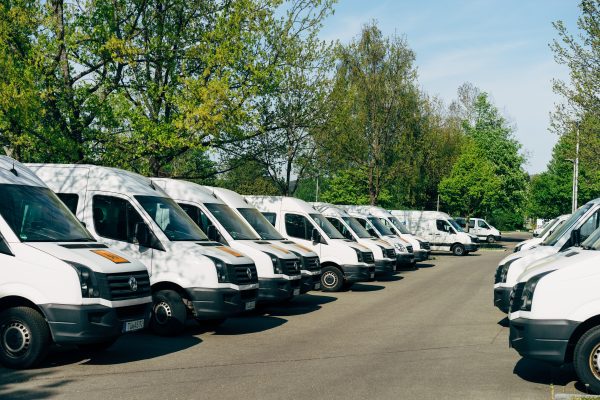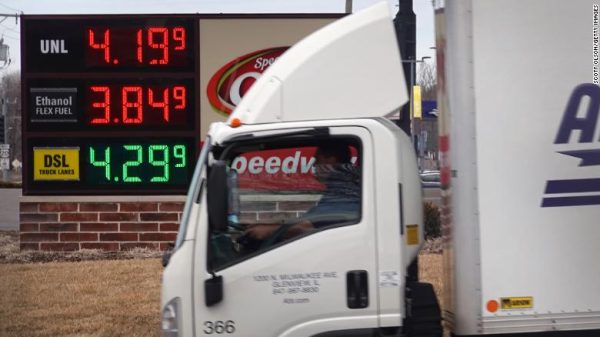
There are a number of supply chain challenges facing the fleet industry. Transportation-heavy industries are still facing a combination of semiconductor chip and fuel shortages for new vehicles, and it’s threatening the fleet market.
Lead times for new vehicles continue to be a problem thanks to issues out of Taiwan, where all semiconductor chips are made. The manufacturer is prioritizing profits by making chips for automakers selling to individuals rather than fleets because auto prices have risen due to very little supply and increased demand.
The British Vehicle Rental and Leasing Association (BVRLA) reported in March 2022 that new car registrations in the fleet and business sector, including auto rental agencies, reached 106,243 units. That’s a 32 percent drop from March 2021, according to new figures from the Society of Motor Manufacturers and Traders (SMMT).
Normally a busy time of year for ordering, this past March was the worst on record for fleet vehicles since 1998.
Continued disruptions in the supply of vehicles to the fleet sector hinders growth in this area, even though more companies need expanded fleets.
To further complicate matters, Russia’s invasion of Ukraine has initiated limits on Russia’s fuel exports, leading to an unprecedented rise in fuel costs.

What Are Lead Times Like for New Fleet Vehicles?
Lead times are now up to a year, which is similar to how it was during the height of the global COVID-19 crisis.
The majority of chips are still going to consumer electronics and personal computers as a result of the pandemic, remote work demands and the ever-elusive work-life balance.
Last year at this time, there were promises of new cars for October 2021, a prediction that never materialized due to ongoing supply chain issues. Presently, it seems there is no end in sight.
What Are Fleet Owners Saying?
A vast majority of BVRLA members said that supply issues were their primary concern. Another 71% stated that a lack of vehicle availability will affect their company’s performance.
Many fleet owners claim that customer expectations not being met, even though larger compromises are being made to keep them mobile. While these restrictions are fine for some sectors where lower-end customers may not notice, luxury fleets may feel the pinch as they lose more discriminating customers used to higher standards.
As such, fleets are having to adapt their businesses to cope with the lack of vehicles.
How Are Fleets Coping?
Fortunately, fleet owners are getting creative during this crisis.
Vehicles are being held in the fleet for longer periods of time. Because fleet owners need to hire mechanics to perform the work, this increases maintenance and labour costs.
Holding onto existing vehicles isn’t as cost-effective as adding new ones; some of those newer vehicles, especially EVs, don’t need the same amount of maintenance, and they can be leased rather than purchased outright, which lowers upfront costs.

Some fleet owners are paying higher prices for their vehicles. Average new vehicle prices are 10 percent higher in 2022 than they were in 2021. Fleet owners must pass those extra costs onto consumers, which will only exacerbate the issue due to rising fuel costs.
Meanwhile, global vehicle production has dropped 40 percent. New car prices won’t come down for a while because demand is still high, even though dealer lots remain empty. It is estimated that as many as 8.1 million new vehicles are expected to be lost from now until 2023.
One option for fleet owners is to reimburse employees for using their personal vehicles for business use. Company owners can provide a flat-rate reimbursement (daily, weekly, or monthly) for employees.
They could also offer a per-mile reimbursement depending on a driver’s hours of service (HOS). There is also a fixed and variable rate model that takes into account depreciation, wear, tear, and maintenance of a vehicle.
Electric vehicles are a viable option, though they still require chips and an improved infrastructure that enables frequent charging and maintenance while on the road.
It bears mentioning that all of these choices are temporary solutions. The only sustainable, long-term solution is to bring new vehicles back to market.
What Are the Long-Term Effects of This Problem for Fleet Owners?
Customers continue to demand lower vehicle emissions, which means newer and more fuel-efficient cars. However, the pandemic is wreaking havoc on the fleet industry as companies try to meet demand.
EVs
EVs are a huge boon to the industry, but there needs to be infrastructure in place to handle them. Can new charging stations be installed in time to meet demand? Will the government step in to help? Who will cover infrastructure costs? Which incentives can fleet owners tap into to make their investments pay off?
More automakers are bringing electric vehicles online in the coming years, and they will certainly reduce maintenance costs for your fleet. But they don’t address the short-term problem fleets are facing right now.

Leasing a Fleet
Leasing fleets of vehicles may be a more affordable choice over purchasing outright. Dealers and manufacturers can offer incentives to lease at wholesale, and the lowered expense may make it an attractive investment option for fleet owners.
Leased vehicles are typically newer model cars, no more than five or six years old, which make them more attractive to customers who demand nicer vehicles for transportation or deliveries.
Buying Certified Pre-Owned
Certified pre-owned purchases can also be a good option for fleet owners. Manufacturers have strict standards for CPO vehicles. Typically, they are less than six years old and factory-trained mechanics bring each vehicle up to factory specs as much as possible.
No, these vehicles aren’t brand-new. Yes, they have some mileage on them. However, buying a certified pre-owned fleet offers a way to cut costs while bringing more vehicles online while you wait for new vehicles to arrive.
The downside to this option is that used car prices have also gone up due to demand for vehicles in general. The best option right now is to manage your fleet the best you can, and that means finding ways to keep costs low and customer satisfaction high.
To that end, fleet management software offers one way to monitor the performance of your vehicles.
Software to Manage Fleets
Now is the perfect time to upgrade your fleet management software. It can give you insights as to when you should upgrade and update your fleet, as well as helping you optimize routes and staffing levels.
Our Zendu Maintenance software lets you run your fleet maintenance operations more effectively and efficiently. It can help you determine when to take vehicles out of service for repairs, or when it’s time to purchase replacement vehicles.
Zendu Maintenance can automatically generate work orders to save you time and resources. Preventative maintenance saves your business money while reducing downtime.
With easy-to-use features such as drag and drop calendar scheduling and QR codes to quickly scan work order progress, Zendu Maintenance makes running your fleet easier than ever.
Talk to us about your options!










